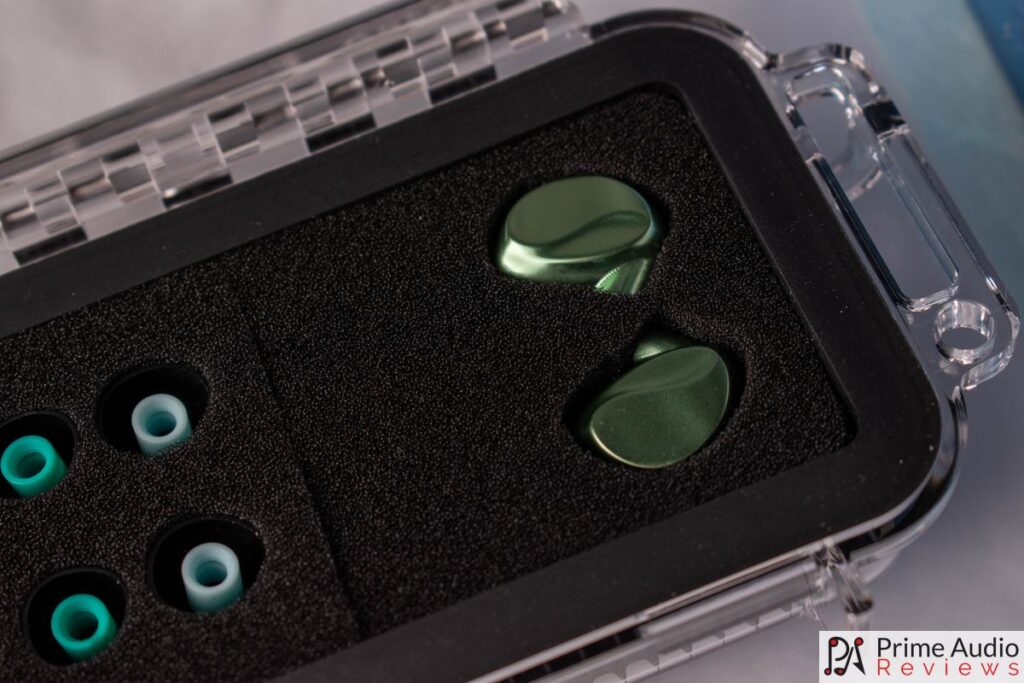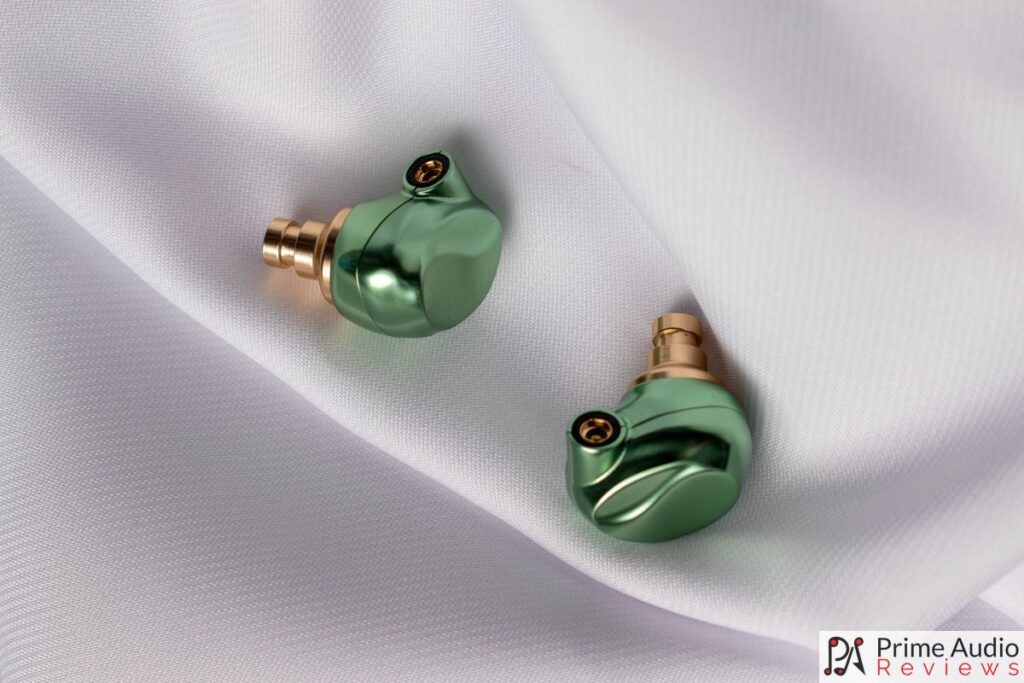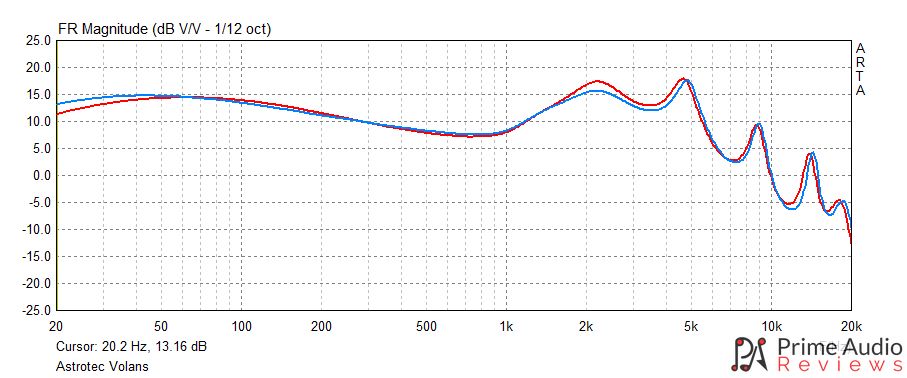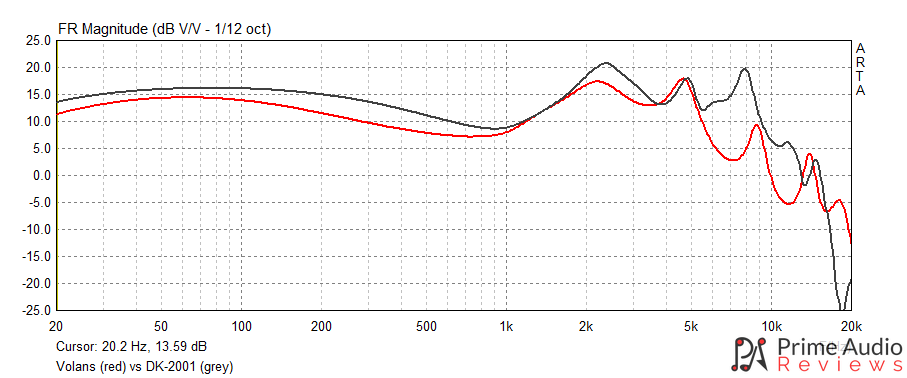South of the celestial equator lies the Volans constellation. Volans represents a flying fish and it first appeared on a celestial globe published in 1597. Why am I telling you this? It’s because the subject of today’s review is the Astrotec Volans in-ear monitor.
Volans is an innovative IEM and the result of years of research including hundreds of material and structural tests. It’s comprised of a Tesla magnetic brass driver unit with a single 10.5mm multi-layer biological diaphragm. Brass was chosen for its unique acoustic properties such as the way it reflects and absorbs sound waves. It’s all very interesting but how does the end product actually sound? Let’s find out.
Astrotec website: https://astrotecglobal.com/
Disclaimer: This sample was provided for the purpose of an honest review. All observations and opinions here are my own based on my experience with the product.
Astrotec Volans
- Excellent storage case included
- Great build quality and comfort
- High-quality detachable cable
- Smooth, non-fatiguing tuning
- Good midrange resolution
- Treble is quite subdued
- Lacks dynamics and energy
Package and Accessories
Volans’ box comes in a blue cardboard sleeve that has a hand-painted look design. On the front, it simply has the model and brand name in embossed silver text. On the back of the sleeve are a list of features and specifications.
The box proper is black with a folding magnetic flap and Astrotec branding in embossed silver text. Opening the box reveals a card with instructions on how to properly wear the earphones. Beneath the card is a nice Pelican style plastic case. The whole package has quite a premium feel to it which is reinforced as you dig in deeper. Here are the contents of the box:
- Astrotec Volans earphones
- Detachable 4-core 3.5mm MMXC OFC cable
- 3 pairs of Sony hybrid silicone eartips
- 1 pair of foam eartips
- 1 protective mesh pouch
- Pelican style hard carry case
- Cleaning tool
- Documentation

Design, Comfort and Noise Isolation
The Astrotec Volans comes in 2 colours, Galaxy blue and Mint green. I was fortunate enough to receive the mint green variant which I think looks unique and quite stunning. Volans is quite a petite IEM, although the brass nozzles are fairly long. Speaking of the nozzles, they have a protective mesh cover and a small vent at the base.
In a design sense, the shells are minimalistic in their appearance and let the contours and lines do the talking rather than being plastered with text and branding. Having said that, the model name is etched on the inner side of the shell and can only be seen when handling the earpieces up close.

I find the Volans to be a very comfortable earphone. With its longish nozzles, I can even use smaller eartips than usual which is a nice change. The rounded shell surface doesn’t cause any hotspots and fits naturally in my ears. Needless to say, I can wear these for prolonged periods without any issues whatsoever.
Noise isolation is about average for this type of shell, which is to say good enough for normal everyday situations such as commuting and going about your business. Assuming you have a good seal with your chosen eartips, once the music starts playing, most normal outside noise fades away.

Cable
What I first noticed about the included cable was the short MMCX connectors. This might seem like a trivial matter but I think they’re dope. Not only do they allow the cable to fit more naturally about the ears but perhaps even more importantly, it shows that Astrotec is thinking outside the box rather than just following the industry standards.
The cable is a braided 4-core OFC variant and is extremely lightweight. It handles very nicely and there is no significant cable noise. The Y-split and right-angled 3.5mm plug are aluminium and there is a transparent plastic chin slider as well. Overall, this is a nice cable and one worthy of an IEM in this price range.

Sound
Gear used for testing
- Shanling Q1
- Sony NW ZX-300
- Soundaware M2Pro
- PC -> Foobar2000 -> Topping DX7 Pro
The Astrotec Volans has a fairly linear sound signature with a lower treble lift. It has a tidy bass, rich, detailed midrange and a non-offensive but airy treble. This is a tuning that emphasizes the midrange and vocals and adds just enough low and high end around it to maintain a natural tone. It’s not the snappiest or most engaging sound but a more romantic tuning with softer edges and smooth presentation yet one filled with nuance, resolution and instrument separation.

Bass
The Volans’ bass is light in quantity but technically impressive. It sits just about in line with the core midrange but carries itself with a natural fullness and weight. Emphasis is placed on the mid-bass, while the sub-bass is fairly polite but still satisfying.
There isn’t a lot in the way of bass slam or punch but instead, the Volans takes a gentler approach in its quest to highlight the midrange. This isn’t a case of a lean or anaemic-sounding bass: the Volans’ low end has a natural thickness to it but also has a very tidy decay and tight control. Although it does have good depth, I sometimes found myself wanting a bit more fervour in the bass.
Mids
It’s in the midrange that the Volans directs the majority of its energy and for mids lovers, it undoubtedly pays off. This is a midrange that is rich and warm yet maintains a natural and accurate tone. Despite being silky smooth, the Volans’ midrange has impressive resolution for a monitor in this price range.
The peak at 5kHz adds a good deal of vocal presence making Volans the perfect IEM for songs like Lunatic Soul’s “A Thousand Shards of Heaven”. Listening on Volans, the vocals are at the forefront, in front of the acoustic and bass guitars while the string section fills out space in the background.
Those strings have a lovely rich tone, perhaps softened slightly but still hypnotic and enveloping. Later in the song when the drums kick in, the attack on the snare is crisp and well-defined while the electric guitars have just the right amount of crunch and bite.
Treble
There are some deftly placed peaks and valleys in Volans’ treble that simultaneously give it definition and attack in the mids but keep its high frequencies ultra-smooth. Despite what looks to be a healthy 4.5-5kHz spike, there isn’t even a hint of sibilance or harshness to be found. However, certain horns and the plinking of upper piano registers really pop. This is highlighted in Tingvall Trio’s “Sjuan” where the piano stays well forward of a fairly lively percussion.
While the treble extension is only moderate, treble notes are quite airy and tend to shimmer more than crash. The timbre of the treble remains accurate even though it sits at the back of the mix. Somehow the Volans manages to maintain sufficient clarity and openness in spite of it’s attenuated and smooth treble.
Soundstage
While the Astrotec Volans’ soundstage dimensions are modest, there is solid layering and good instrument separation. Stage width is average but there is a good sense of depth and space between instruments. The stage positioning is somewhat forward but not cloying or confined. Although note density, particularly in the treble is somewhat diluted, the overall resolution is one of my favourite aspects of the Volans.

Comparisons
Shanling ME500 Platinum Edition ($289)

The Shanling ME500 PE (review here) is a hybrid triple driver IEM with a 1DD+2BA configuration. If you were to base your conclusions of this comparison from the graph alone you would be WAY off. That’s why these measurements should only be part of the criteria and the most important thing is to actually listen to an IEM.
The ME500 PE has better bass extension, along with more impact and slam. It has a more traditional V-shaped presentation compared to the Volans. ME500 PE has more clarity in the midrange, however, the Volans is on par with it in terms of resolution. Volans’ mids and vocals are more forward in the mix and are the emphasis of its signature while the ME500 PE’s conventional tuning lifts the bass and treble more.
Most notably, the Shanling IEM has more upper treble presence which is where the extra midrange clarity comes from. Furthermore, percussion instruments have sharper attacks and extra definition. Another thing the ME500 PE gains from its more forward treble is detail and in fact, it has class-leading micro-detail retrieval in its price range for a warm-sounding IEM.
Mangird Tea ($299)

The Mangird Tea is a hybrid 7-driver (6BA+1DD) IEM. It has a very linear presentation with excellent sub-bass extension. The Tea has a leaner and lighter bass than Volans, and indeed, it’s overall signature is brighter.
The Tea’s core midrange is pushed forward in the mix but because of a leaner upper bass and more extended treble, vocals and instruments are leaner and cooler than on the Volans. Volans’ mids, in comparison, sound slightly warmer and more natural, even though the overall tonal balance is unorthodox.
Where the Mangird Tea gets its brightness from is its lifted and extended treble which contrasts starkly with the subdued Volans treble. Female vocals are more energetic and articulate on the Tea but at the same time sound thin at times.
DUNU DK-2001 ($299)

The DUNU DK-2001 (review here) is a hybrid 4-driver (3BA+1DD) IEM. It has a forward, dynamic presentation that has good end to end extension. DK-2001 has a punchier, more impactful bass and increased sub-bass rumble.
In terms of midrange, both the DK-2001 and Volans push it forward. The difference is the DUNU boosts the core and upper midrange while the Volans scoops out the treble and lower bass to achieve its midrange focus. The DUNU has a vibrant forward sound from end to end while the Astrotec IEM focuses strongly on its midrange.
DK-2001’s treble is livelier and airier, giving its sound additional clarity stronger dynamics and a larger soundstage. Of course, having a more forward treble like this means the midrange isn’t highlighted as much as it is on the Volans.

Conclusion
When it comes to build quality and accessories, the Astrotec Volans hits a home run. In terms of its sound, the Volans is going to target more of a niche audience, i.e. one that places their priority on midrange focus while sacrificing some dynamics in the bass and especially the treble.
If you’re someone who loves a punchy, physical bass or an energetic and sparkly treble, this earphone probably isn’t for you. However, if it’s vocals and midrange instruments with accurate tone and good resolution that floats your boat, this should be a great option for you. Moreover, if you are someone who is particularly treble-sensitive, the Volans has got you covered.
Specifications
- Driver Unit: 10.5mm Tesla Dynamic Driver
- Impedance: 32 ohm
- Sensitivity: 110 dB/1mW
- Cable: High purity OFC cable
- Cable Length: 1.2±0.03m
- Plug: 3.5mm stereo gold plated plug
- Connector: MMCX
- Frequency Response: 8Hz – 40000Hz




